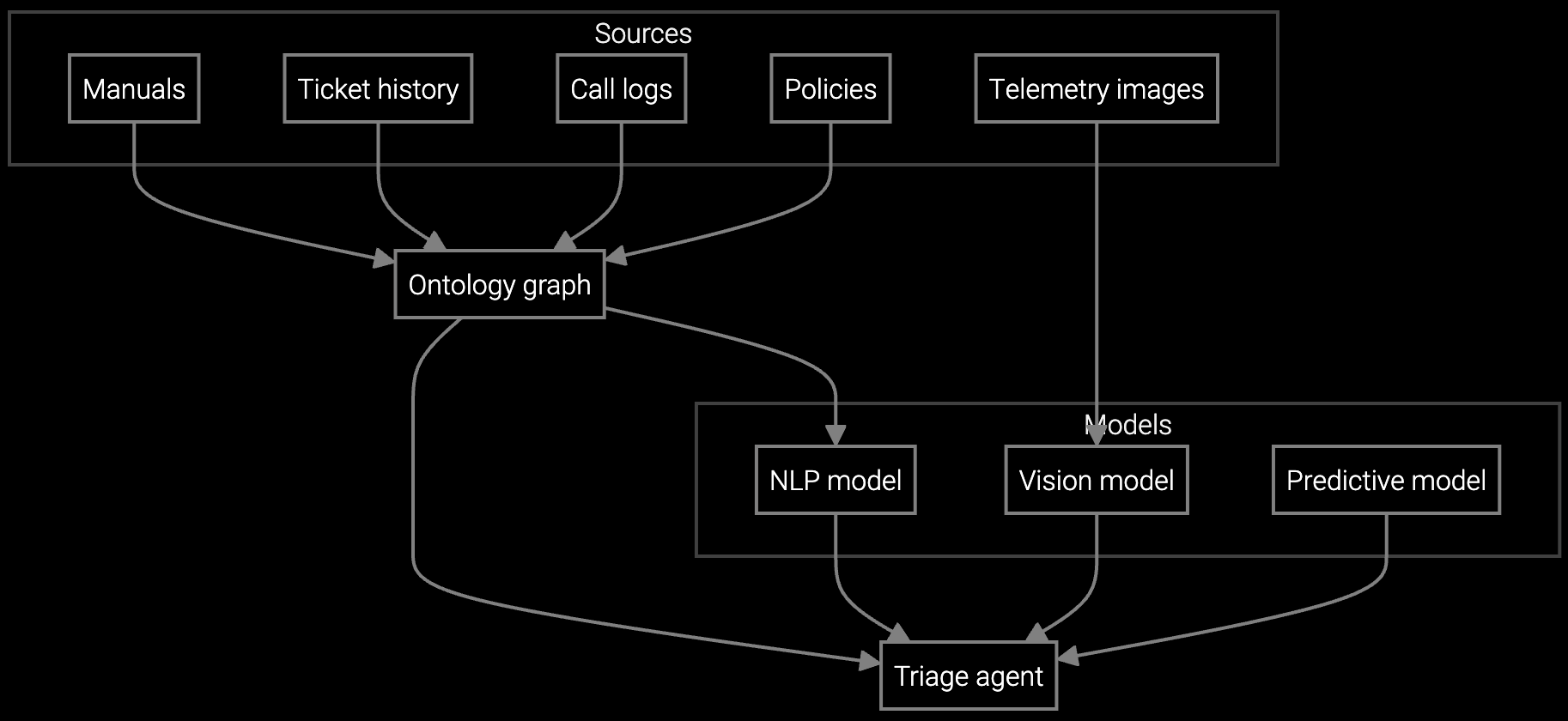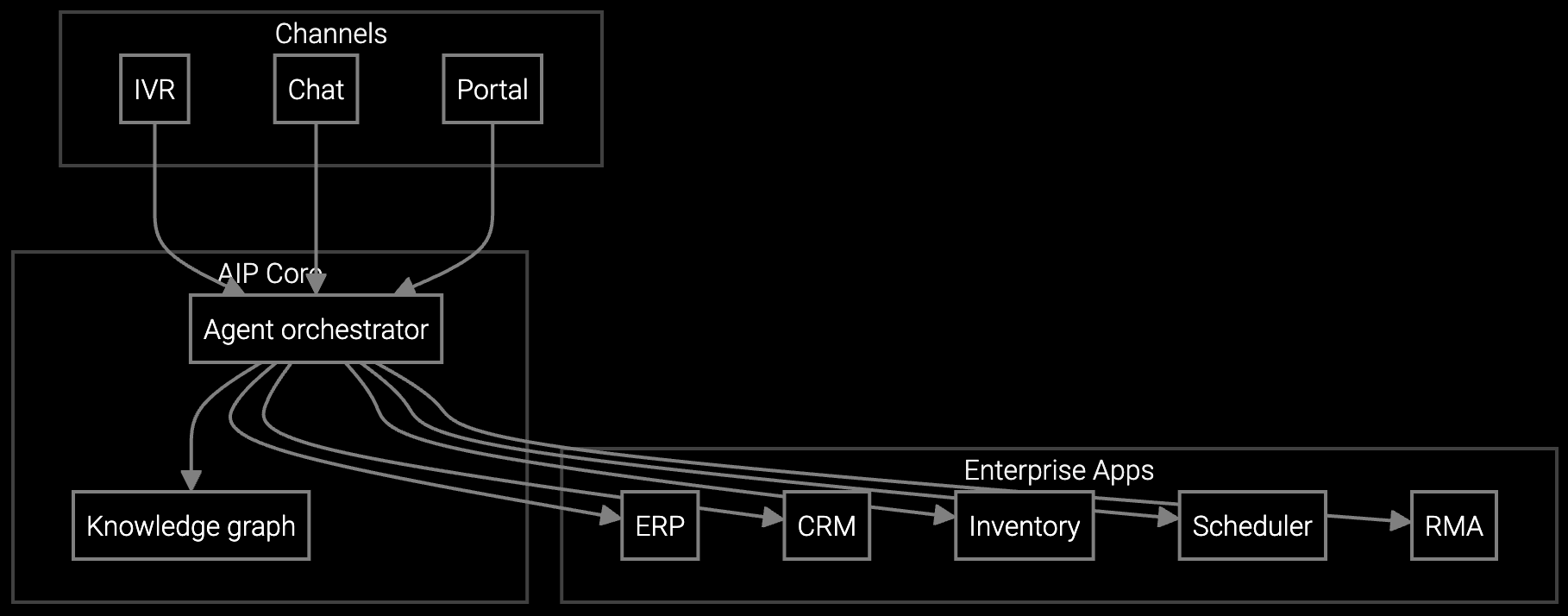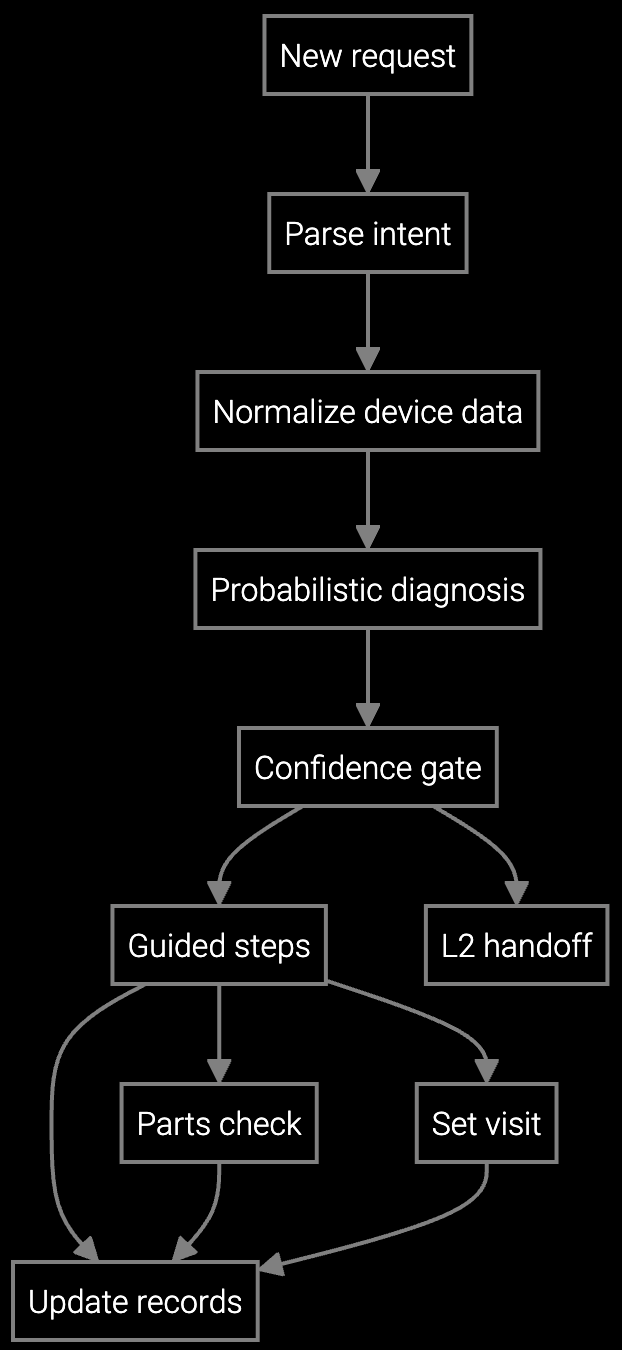Service Diagnostics and Triage
AI-powered triage agent auto-diagnoses service issues and guides resolution, reducing call volume by 35% with 16% FCR improvement.
Challenge
Support teams field heavy volumes of service calls, tickets, and warranty claims, many tied to recurring issues. Knowledge lives across manuals, images, service records, and tribal memory, so troubleshooting is manual and inconsistent. Agents hop between CRM, ERP, knowledge bases, RMA portals, and scheduling tools; a typical case takes 10 to 20 minutes and often leads to repeat contacts.
The objective: deploy an NLP-powered triage agent to auto-diagnose issues, guide resolution, and update systems—achieve ≥35% call volume reduction, ≥16% FCR lift, and ≥12.5% AHT reduction with policy-compliant actions.
Solution: How AIP changed the operating model
Learning and setup
Powered by the Aftermarket Intelligence Platform (AIP), the agentic solution applied its NLP LLM, policy, predictive, and vision models. Training data came from service manuals and troubleshooting trees, historical tickets and resolutions, call and chat transcripts, warranty policies, IoT telemetry snapshots, and annotated screenshots and device images. This enabled the AI agent to recognize and interpret free-text symptoms, fault codes, model and serial numbers, firmware versions, telemetry logs, images or video, site details, and warranty or contract IDs. *(Training diagram)*

Workflow orchestration
The AI agent reads inbound requests across IVR, chat, and portal, extracts identifiers, and selects the correct triage path. It queries the ontology for known patterns, checks entitlement in ERP, updates CRM cases, and invokes inventory, scheduling, and RMA tools when needed. Logic branches on confidence and risk—for example, safety signals or out-of-warranty devices trigger specialized flows—while enforcing policies end to end. *(Solution architecture diagram)*

Execution and resolution
The AI agent parses intent, normalizes device metadata, runs probabilistic diagnosis, and selects a triage path. It generates guided steps, collects user responses and telemetry, computes confidence, and presents the resolution. When parts or visits are required, it checks availability and books service, then posts updates to connected systems. Exceptions such as safety alerts, unclear images, or ambiguous symptoms are routed to L2 with full context and a next-best action. *(Workflow execution diagram)*
